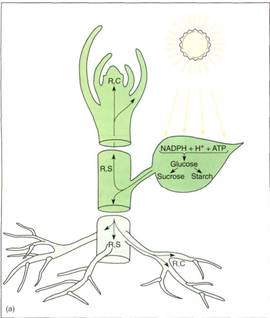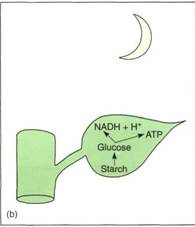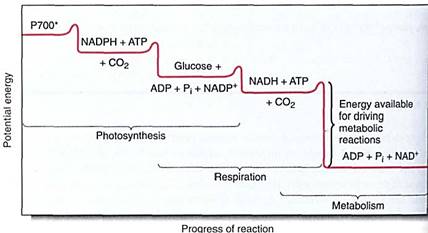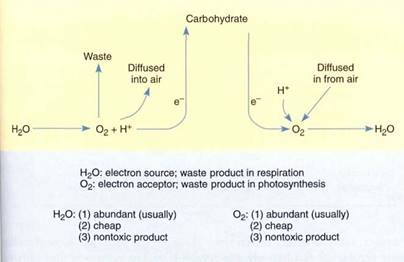

النبات

مواضيع عامة في علم النبات

الجذور - السيقان - الأوراق

النباتات الوعائية واللاوعائية

البذور (مغطاة البذور - عاريات البذور)

الطحالب

النباتات الطبية


الحيوان

مواضيع عامة في علم الحيوان

علم التشريح

التنوع الإحيائي

البايلوجيا الخلوية


الأحياء المجهرية

البكتيريا

الفطريات

الطفيليات

الفايروسات


علم الأمراض

الاورام

الامراض الوراثية

الامراض المناعية

الامراض المدارية

اضطرابات الدورة الدموية

مواضيع عامة في علم الامراض

الحشرات


التقانة الإحيائية

مواضيع عامة في التقانة الإحيائية


التقنية الحيوية المكروبية

التقنية الحيوية والميكروبات

الفعاليات الحيوية

وراثة الاحياء المجهرية

تصنيف الاحياء المجهرية

الاحياء المجهرية في الطبيعة

أيض الاجهاد

التقنية الحيوية والبيئة

التقنية الحيوية والطب

التقنية الحيوية والزراعة

التقنية الحيوية والصناعة

التقنية الحيوية والطاقة

البحار والطحالب الصغيرة

عزل البروتين

هندسة الجينات


التقنية الحياتية النانوية

مفاهيم التقنية الحيوية النانوية

التراكيب النانوية والمجاهر المستخدمة في رؤيتها

تصنيع وتخليق المواد النانوية

تطبيقات التقنية النانوية والحيوية النانوية

الرقائق والمتحسسات الحيوية

المصفوفات المجهرية وحاسوب الدنا

اللقاحات

البيئة والتلوث


علم الأجنة

اعضاء التكاثر وتشكل الاعراس

الاخصاب

التشطر

العصيبة وتشكل الجسيدات

تشكل اللواحق الجنينية

تكون المعيدة وظهور الطبقات الجنينية

مقدمة لعلم الاجنة


الأحياء الجزيئي

مواضيع عامة في الاحياء الجزيئي


علم وظائف الأعضاء


الغدد

مواضيع عامة في الغدد

الغدد الصم و هرموناتها

الجسم تحت السريري

الغدة النخامية

الغدة الكظرية

الغدة التناسلية

الغدة الدرقية والجار الدرقية

الغدة البنكرياسية

الغدة الصنوبرية

مواضيع عامة في علم وظائف الاعضاء

الخلية الحيوانية

الجهاز العصبي

أعضاء الحس

الجهاز العضلي

السوائل الجسمية

الجهاز الدوري والليمف

الجهاز التنفسي

الجهاز الهضمي

الجهاز البولي


المضادات الحيوية

مواضيع عامة في المضادات الحيوية

مضادات البكتيريا

مضادات الفطريات

مضادات الطفيليات

مضادات الفايروسات

علم الخلية

الوراثة

الأحياء العامة

المناعة

التحليلات المرضية

الكيمياء الحيوية

مواضيع متنوعة أخرى

الانزيمات
Introduction to Respiration in Plants
المؤلف:
AN INTRODUCTION TO PLANT BIOLOGY-1998
المصدر:
JAMES D. MAUSETH
الجزء والصفحة:
2-11-2016
2658
Introduction to Respiration in Plants
The light-dependent reactions of photosynthesis produce an excess of energy, which is store as glucose and starch; an important corollary must be the ability to recover that energy and reduced carbon. Recovery may occur later, when photosynthesis is impossible, such as at night or in winter when the plant is leafless. Also, energy recovery may occur at a different site from photosynthetic capture: Glucose may be converted to sucrose, transted to apical meristems, vascular cambia, or any other heterotrophic tissue, and broken down to recover the energy (Fig. 1).


FIGURE 1: (a) When light is available, autotrophic tissues produce more ATP and NADPH than needed for cell metabolism. Glucose is produced, part of which is stored as starch in the leaf and part convened to sucrose and transported to areas that are either completely heterotrophic or are growing more rapidly than their own photosynthesis can support. Sucrose is converted back to glucose and is either respired (R) or used in the construction (C) of cell structures such as cellulose, lignin, amino acids, and nucleic acids. In roots, trunks, fruits, and seeds, some glucose may be polymerized to starch and stored (S) for months or years, (b) Even autotrophic tissues are heterotrophic in the dark, surviving on the respiration of stored starch.
Respiration is the process that breaks down complex carbon compounds into simpler molecules and simultaneously generates the ATP used to power other metabolic processes (Fig 2). During respiration, carbon is oxidized. Its oxidation state goes from +0 to +4 as electrons are removed by NAD+, which is converted to NADH in the process. This is basically the opposite of photosynthesis, in which NADPH carries electrons to carbon, reducing it. The NADH generated by respiration is a good reducing agent, but it is pro- CLHC in much larger quantities than needed for constructive reduction reactions. Plants use mostly NADPH from photosynthesis for their reductions, not NADH, and most of the compounds that animals and fungi consume are already reduced. Because NADH contains great amount of energy, it is selectively advantageous for an organism to be able to oxidize it so as to generate even more ATP.

FIGURE 2:This hypothetical reaction diagram shows the relative levels of potential energy of the major compounds of photosynthesis and respiration. Energized P700 has the greatest potential energy, most of which is trapped in the formation of ATP and NADPH. When these reduce carbon dioxide and make glucose, much of the energy is conserved. Respiration transfers the energy to ATP and NADH. During other metabolic reactions, the breakdown of ATP and NADH yields large amounts of energy. Depending on the metabolic pathway, some of this energy is retained and some lost.
The oxidation of NADH to NAD+ requires transferring electrons from it onto something else. The ideal recipient would be abundant, cheap, and nontoxic after it is used (Fig.3). These are also the three ideal characteristics of the source of electrons in photosynthesis, and the chemical involved in both processes in water. As it turns out, the result of respiration is the reverse of photosynthesis: Electrons are transferred from carbon in carbohydrate by means of reduced NADH, which carries them to an electron transport chain, which in turn deposits them onto oxygen, reducing it. As electrons are added, protons are attracted and incorporated, converting oxygen to water. If this reverse analogy were carried ere step further, the electron transport chain would have to give off light. But that would be a complete waste of energy; instead it conserves the energy as high-energy phosphate- bonding orbitals of ATP.

FIGURE 3:It is selectively advantageous for an organism's metabolism to be based on raw materials that are abundant and cheap and produce nontoxic waste products. Mutations that cause an individual to require rare or expensive compounds or those that break down into toxic products are selectively disadvantageous.
Respiration is also useful to the plant because the numerous intermediate compounds of its many steps are useful as the starting materials for several anabolic pathways. A molecule of glucose, after entering the respiratory pathway but before being broken down to carbon dioxide and water, may be picked up in the form of an intermediate by a non-respiratory enzyme that diverts it into a pathway that produces amino acids, fats, nucleic acids, lignin, and other molecules.